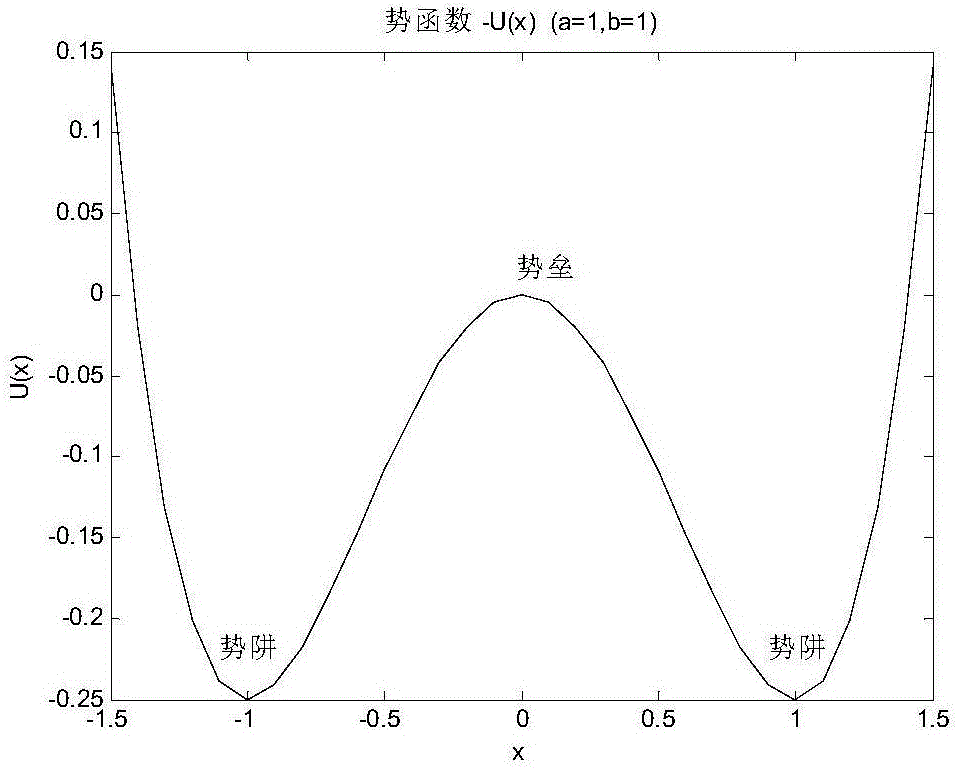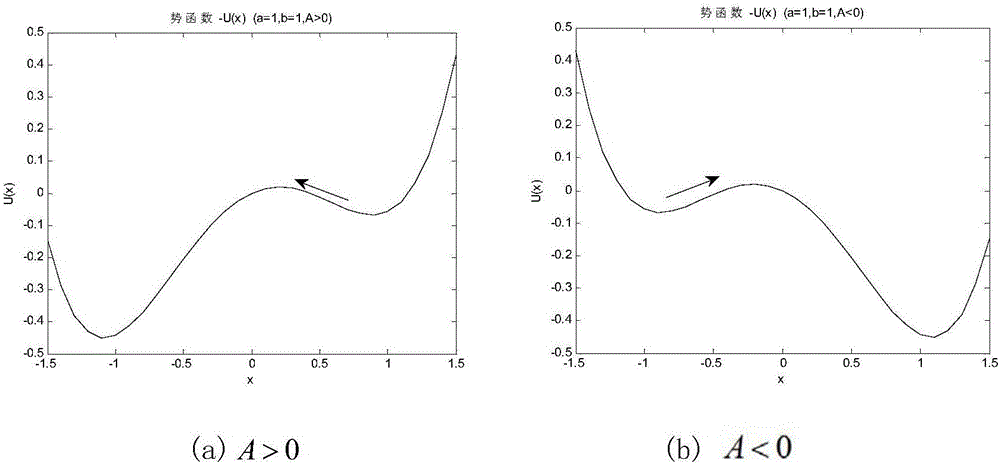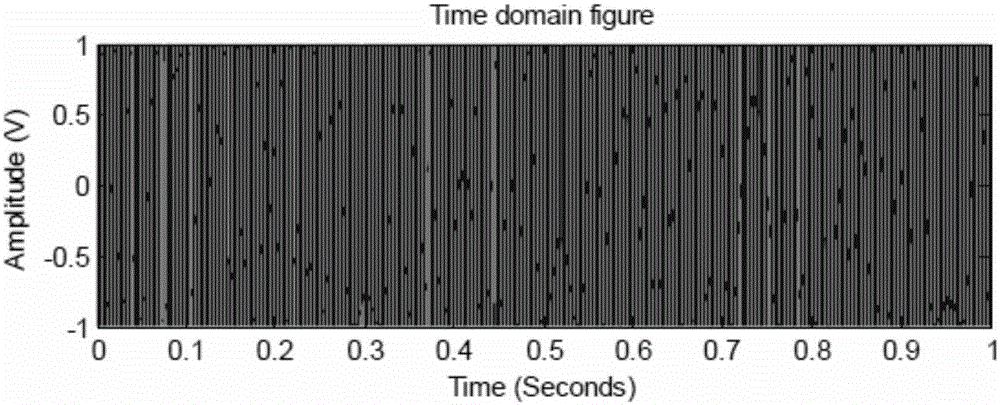Underwater signal enhancing method based on stochastic resonance and time reverse mirror
A time-reversal mirror and stochastic resonance technology, applied in electrical components, transmission systems, etc., can solve problems such as high signal-to-noise ratio requirements, increasing system design complexity, and affecting communication rates.
- Summary
- Abstract
- Description
- Claims
- Application Information
AI Technical Summary
Problems solved by technology
Method used
Image
Examples
Embodiment Construction
[0049] The following embodiments will further illustrate the present invention in conjunction with the accompanying drawings.
[0050] Embodiments of the present invention include the following steps:
[0051] 1) Using a genetic algorithm to obtain a bistable model of stochastic resonance;
[0052] 2) Use the fourth-order Runge-Kutta method to solve the bistable output signal, and obtain the enhanced signal after stochastic resonance;
[0053] 3) Using virtual time reversal mirror technology, by processing the signal after stochastic resonance, the channel impulse response is estimated, and the received information code signal is convolved with the time reversal of the estimated channel, so as to use the The energy further enhances the signal.
[0054] In step 1), the specific steps of obtaining the bistable model of stochastic resonance by using the genetic algorithm are as follows:
[0055] The bimodal model is represented by the nonlinear Langevin equation:
[0056] x(t...
PUM
 Login to View More
Login to View More Abstract
Description
Claims
Application Information
 Login to View More
Login to View More - R&D
- Intellectual Property
- Life Sciences
- Materials
- Tech Scout
- Unparalleled Data Quality
- Higher Quality Content
- 60% Fewer Hallucinations
Browse by: Latest US Patents, China's latest patents, Technical Efficacy Thesaurus, Application Domain, Technology Topic, Popular Technical Reports.
© 2025 PatSnap. All rights reserved.Legal|Privacy policy|Modern Slavery Act Transparency Statement|Sitemap|About US| Contact US: help@patsnap.com



